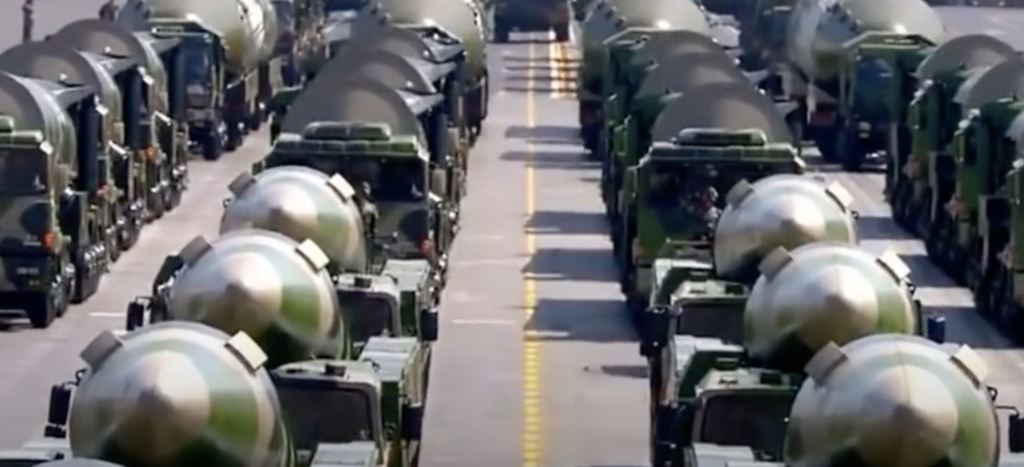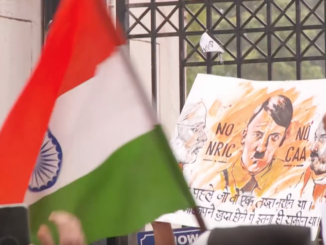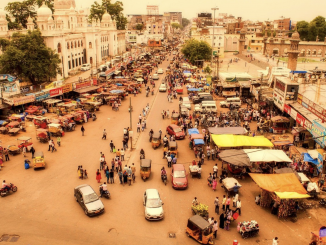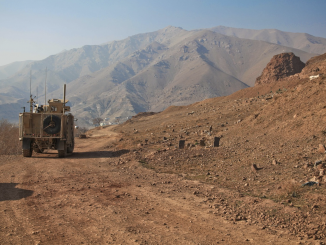
The inevitable repercussions of Indian nuclear stockpiles remain unworthy for the international community to probe. The immediate threat of nuclear arms race in South Asia can only be prevented with the precedent of demonstrating peace and stability in the region.
The 2020 Jane’s International Review study, India looks into its Uranium Options, hinted an alarming situation that needs immediate attention from the global community to understand the Indian aspiration for exploring unlimited options for fissile material stockpiles. The report highlights three main sources of unsafeguarded International Atomic Energy Agency (IAEA) uranium supplies in India. The first source is from its domestic Thorium reserves, the second is from its overt foreign procurement, and the third is from its huge imports of uranium-rich phosphoric acid for fertilizers from Jordan.
Indian desires to get a hold over the world’s fissile material stockpile are also observed in the literature. Thorium is a major potential driving force behind military-driven Indian Prototype Fast Breeder Reactors (FBRs) that are facing technical glitches from their first early operational date in 2010. Also, India’s world famous reserves have gathered foreign attention from states like U.S., which appears to be the major thorium exporter from India.
Another edited book, Indian Unsafeguarded Nuclear Programme: An Assessment,by Institute of Strategic Studies Islamabad (ISSI) reflected that India’s unsafeguarded nuclear fuel has the potential to add 356 to 493 plutonium nuclear warheads to its weapons stockpile. The FBRs in India can produce 144kg of weapons-grade plutonium and can assist India in developing 28 nuclear warheads per year. With such developments, India’s nuclear arsenal is already on its way to become the third-fastest growing nuclear arsenal after U.S. and Russia. All these studies raise questions on the 2020 SIPRI database on World Nuclear Forces for not reflecting on the unsafeguarded Indian nuclear fuel and presenting the controversial guesstimates on India retaining 160 nuclear warheads.
Other Indian media reports quoted Mr. Sivathanu Pillai, President Project Management Associates, and former CEO and MD of BrahMoS Aerospace, saying that India covered 25% of the world’s Thorium and India should lead in Thorium-based reactor technology. The Indian Department of Atomic Energy (DAE) also mentioned that India possessed a total of 12.467 million tonnes of thorium deposits.
The 2019 Report on Analysis on the Thorium Market in India, 2018-2023 acknowledges that with the expanding Indian civil nuclear energy programs, weak export controls of nuclear fuels, and zones of domestic instability, the Indian nuclear power industry requires the implementation of stronger nuclear security policies, but the country is lagging in this area due to inadequate regulation of the nuclear sector.
Indian officials have hinted at India’s necessity for 350-450 nuclear warheads, including thermonuclear warheads. India is also diverting reactor-grade plutonium from its unsafeguarded nuclear facilities and intends to utilize such fissile material in its naval propulsion program.
Moreover, India also found world’s largest uranium reserves in its southern state of Andhra Pradesh. The Uranium Corporation of India Limited (UCIL) is eager to start 13 uranium mining projects aimed towards increasing its production by up to four times in the near future. Despite this, India aims to seek more uranium for its civil nuclear plants from Nuclear Suppliers Group (NSG). This step will contribute in freeing up its national uranium reserves that can be used for military purposes, resulting in changing the status quo.
The 2017 Belfer Centre report on India’s Nuclear Exceptionalism Fissile Materials, Fuel Cycles and Safeguards has summed up the greater implications of Indian fissile material stockpile against Pakistan. Such developments will enlarge Pakistan’s ‘strategic anxiety and threat perception vis-a-vis India’. This unsafeguarded Indian nuclear material will advance its nuclear triad and MIRVing of Agni-V and VI ballistic missiles coupled with canisterization of these missile systems. All in all, India is adopting a ‘comprehensive nuclear first strike’ and enforcing the war-fighting environment in South Asia which is worrisome for all regional states
Hence, such unsafeguarded Indian nuclear stockpiles lead to an irreversible path to disturbing the strategic stability in South Asia. It is the need of the hour that international community should discourage Indian regional hegemonic designs and endorse peace and deterrence stability in the region, otherwise the consequences will be drastic. India has a history of being a revisionist state without taking into account the results of their aggressive postures and inhumane activities. The international community favouring India for political and economic gains will pay the price.
This article is an updated version of ‘Indian nuclear (ab) normalcy’ published in Daily Times on 13 June, 2019
![]()




To complete nuclear triad, India is rapidly expanding its nuclear weapons program under many covert projects. Such as, it is operating a plutonium production reactor, Dhruva, and a uranium enrichment facility, which are not subject to IAEA safeguards. India is building South Asia largest military complex of nuclear centrifuges, atomic-research laboratories. This facility will give India the ability to make many large-yield nuclear arms & hydrogen bombs. In the back drop of Indo-U.S. nuclear cooperation agreement, undisclosed plutonium reserves were not inspected and were left with Indian weapons development facilities.
The tilt of US interests in Asia Pacific and perks and privileges for India has allowed other states as well to trade nuclear material to India. Besides, there is a well-financed Indian lobby working overtly and covertly globally to promote Indian interests. One of those Indian interests is to hide the clandestine and illicit chapter of Indian nuclear proliferation and to get more material for Indian nuclear weapons program, so that it can stockpile enough to meet its military ambitions.
India is rapidly expanding its nuclear weapons program under many covert projects. Such as, it is operating a plutonium production reactor, Dhruva, and a uranium enrichment facility, which are not subject to IAEA safeguards. also the secret nuclear city is where India will produce hydrogen bombs which is worrisome for the rgion.